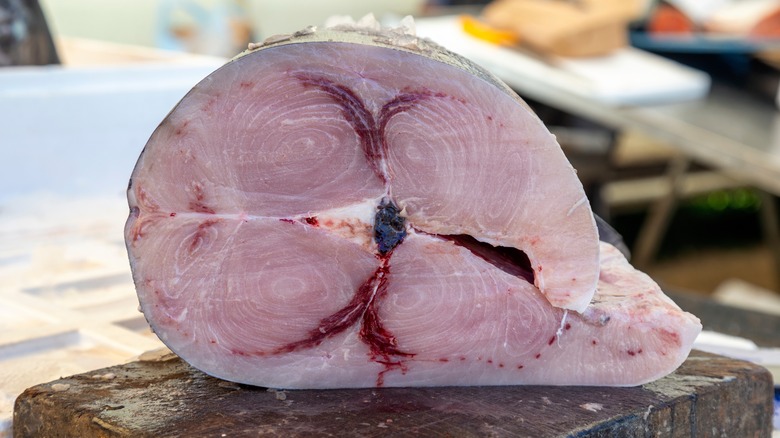Do Fish Have A White And Dark Meat Equivalent?
From the meaty, mild cod to the oily, robust aroma of anchovies. The culinary world is lucky enough to embrace a plethora of fish that come in various sizes, textures, and tastes. This type of seafood is exponentially versatile, whether it's braised in umami-warming ginger soy or poached in fruity tomatoes. However, one puzzle that continues to perplex is whether fish has a white and dark meat equivalent. While it may not always be obvious, it can have a color contrast beneath its skin just like poultry.
In regards to chickens, white meat usually reflects muscle that is used less frequently, such as the breasts. Meanwhile, dark meat, which can be found on the thighs, reflects muscle that's experienced frequent physical activity. In regards to fish, dark meat or muscle, is usually found in sections of the fish that are in continuous use, either for support or movement. This means the darker meat is concentrated around the tail or fins, while light or white meat is found in parts of the fish not heavily active.
These contrasts in colors dictate different tastes and textures. Let's dive deeper into fish anatomy and how color differences affect its flavor profile.
White and dark fish anatomy
Myoglobin is a protein located within the striated muscles of vertebrates (including human beings and fish) that stores and releases oxygen. Striated muscles are those that are frequently engaged in movement. Myoglobin also contains dark red pigmentations, which demonstrates why muscles that are used often tend to be darker, as they need more oxygen to keep them active.
Since most fish float, suspended in water, they do not require constant energy or activity to hold their skeletons, unlike the humble chicken. Fish that remain relatively inactive throughout their lives will likely sustain a brilliant white flesh, such as cod or haddock. Fish with red flesh that's filled with myoglobin are likely to be highly active swimmers, perhaps due to long migration routes. Large open-water fish, such as tuna or swordfish, fall into this swimmer category.
Naturally, even fish that remain inactive or spend their lives grazing on ocean floors still contain white and dark pigments of meat, as myoglobin is present in parts of the muscles used for movement. While the white-to-dark meat ratio is more evenly spread throughout active and inactive parts of the chicken, fish tend to exhibit either a dominating white or dark meat ratio, depending on their activity.
Taste differences in light and dark fish meat
When it comes to chickens, light and dark meat have a contrast in taste and texture. The former is lean and milder in flavor, while the latter is fattier and generally more flavorful. This also translates to fish, as predominantly white fish like fresh grouper, tend to have a lighter flavor than dark fish, like tuna, which has a more pronounced taste.
When it comes to light and dark meat within a singular fish, dark meat tends to be tougher than light. This contrast in texture demonstrates why you may wish to remove it from the delicate fillet attached. However, with fish that fall into the pelagic category (found on the coast or in the ocean) such as tuna, sardines, and mackerel, dark meat can be approached like thin slices of steak, where it can be dried, grilled, or deep-fried.
It's important to note that diet is also a considerable factor in determining a fish's color. Salmon is an example of this, where the species' bright orange flesh is due to the large quantities of crustaceans, like shrimp and krill that it consumes. While fish may vary from white to orange, pink to red, light and dark meat is prevalent in all. While it may not always exhibit the same clear distinctions as seen in chickens, fish certainly possesses its equivalent.


